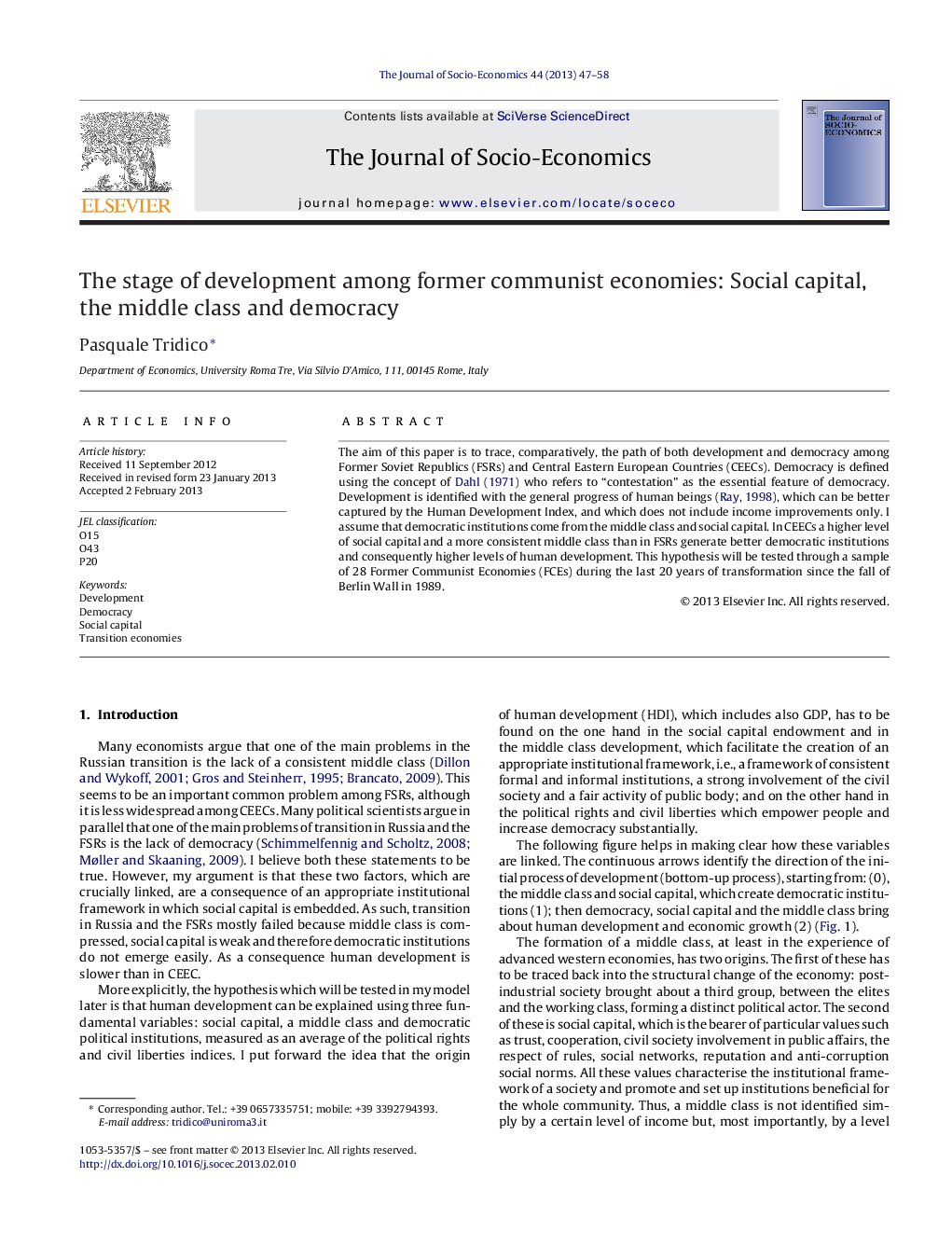| Article ID | Journal | Published Year | Pages | File Type |
|---|---|---|---|---|
| 970643 | The Journal of Socio-Economics | 2013 | 12 Pages |
The aim of this paper is to trace, comparatively, the path of both development and democracy among Former Soviet Republics (FSRs) and Central Eastern European Countries (CEECs). Democracy is defined using the concept of Dahl (1971) who refers to “contestation” as the essential feature of democracy. Development is identified with the general progress of human beings (Ray, 1998), which can be better captured by the Human Development Index, and which does not include income improvements only. I assume that democratic institutions come from the middle class and social capital. In CEECs a higher level of social capital and a more consistent middle class than in FSRs generate better democratic institutions and consequently higher levels of human development. This hypothesis will be tested through a sample of 28 Former Communist Economies (FCEs) during the last 20 years of transformation since the fall of Berlin Wall in 1989.
► I compare the path of both development and democracy among Former Communist Economies. ► Democratic institutions come from the middle class and social capital (MC & SC). ► Then, human development is a consequence of democracy plus MC & SC. ► In CEEC social capital, middle class and democracy is a higher than in FSR. ► Therefore human development is higher in CEEC than in FSR.
